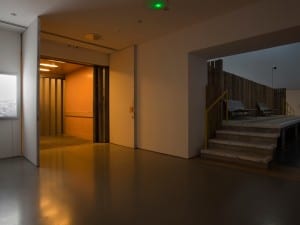The Henry Moore Institute, Leeds, is currently hosting a survey of works by Romanian-born artist, Paul Neagu (1938-2004). Over 120 pieces are exhibited, drawn from his working life between the years 1968-1986. Neagu graduated from the Nicolae Grigorescu Institute of Fine Arts in 1965. Here, at this time, the syllabus prioritised figurative painting over abstraction and, indeed, sculpture. It is clearly evidenced in Palpable Sculpture that Neagu broke away from these standards with sculpture that prioritises an engagement with all five senses. 1969 saw Neagu travel to the UK for the first time, where he was received and guided by the Edinburgh gallerist, Richard Demarco. Neagu also wrote the Palpable Art Manifesto in 1969. The text advises a phenomenological understanding of both sculpture and the surrounding world.
The objects gathered and exhibited at HMI are portable and clearly scaled to the body with the intention that they be touched and examined. As the visitor enters the first exhibition space, a variety of exhibits are presented to the right. These all hold in common the theme of the box. Untitled 1972 consists of an assemblage of wood cuttings, leather, felt and silk. Geometric regularity within and about the overall physical context of a box-like object is clearly important in this grouping. A priority of order and symmetry abides; but this formal, skeletal facet is fleshed out with a stylistic preoccupation with both the primitive and the figurative. A “rounding off” of that which might have been perceived as geometric severity is clearly crafted for a more human, sensual engagement.
In this regard Platform for Duchamp (1978) and Untitled (1970) are particularly remarkable. In the case of the former, as with all box-like assemblages exhibited, the overall impression is one of a cabinet with compartments. Where the compartmentalisation is usually cross-hatched in form on the horizontal and vertical planes, here the viewer finds diagonal interruptions. They are therefore wrong-footed in what is possibly a nod to Duchamp’s The Bride Stripped Bare by Her Bachelors. In the case of the latter, the formal horizontal and vertical compartments of the “cabinet” host graduated stacks of gold mosaic pieces. This box has open doors on either side, echoing the effect of a triptych, or a treasure box.
Further into the exhibition, the dress-like Jumpsuit (1971) reflects Neagu’s commitment to engaging all five senses, as it is meant to be worn. Attached to the fabric of the dress the viewer finds, again, an instance of the theme of compartmentalisation. This time the compartments are regularly arranged transparent plastic pouches into which folded pieces of paper have been placed.
In the main exhibition space, the visitor encounters a collection of figurative sculptures with titles reflecting Neagu’s philosophical ideas. This collection is called the Nine Catalytic Stations. They have names such as Fish Overgate, Starhead and Edgerunner. These pieces are somewhat reminiscent of a highly personal, archetypal dissection of a pantheon that one might expect from Jungian dream analysis. The viewer is subsequently greeted by three plough-like structures called “hyphens”. Along with the other exhibits, these structures reinforce the curiosity and intrigue engendered by Palpable Sculpture, as an invitation to the sensual corroboration so vital to the common sense of phenomenologists.
Daniel Potts
Paul Neagu: Palpable Sculpture, until 8 November, Henry Moore Institute, Leeds.
For more information, visit www.henry-moore.org.
Follow us on Twitter @AestheticaMag for the latest news in contemporary art and culture.
Credits
1. Paul Neagu, Object Tactile, 1970. Courtesy Leeds Museums and Galleries (Leeds Art Gallery) © The Estate of Paul Neagu. All rights reserved, DACS 2015.





